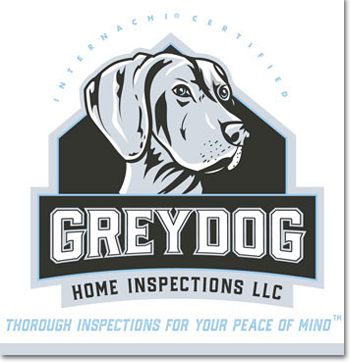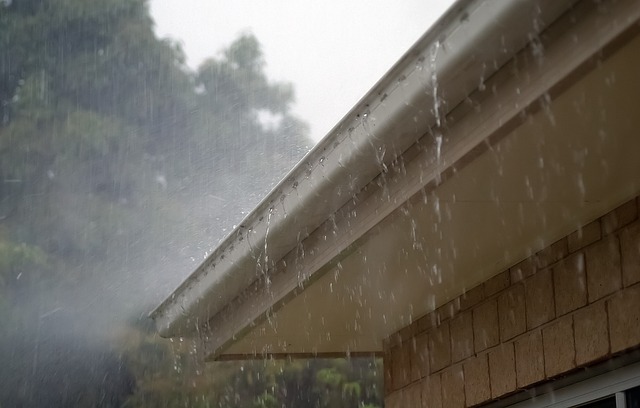Roof drainage is an important aspect of preventing moisture intrusion in the home, but roof drainage systems require ongoing maintenance in order to function as designed. While cleaning out the gutters may not be everyone’s favorite home-maintenance task, gutters filled with debris will not drain properly. Ice dams can form in freezing weather, which can essentially shut down your roof’s entire drainage system, possibly forcing unwanted moisture in through your roof and attic. Also, if runoff from the roof is allowed to discharge too close to the home’s foundation, either because of neglected gutter maintenance or even improper system installation, serious structural problems can develop that can compromise the stability of the entire home. That’s why it’s essential that you monitor and maintain your roof-drainage system.
Gutters
The most common roof-drainage system in residential construction is gutters hung from the roof edge attached to downspouts. The gutters may be open or covered on top, with seams, or seamless. The gutters should be connected to downspouts that direct water away from the home’s foundation. The downspout may lead down to a concrete splashblock that prevents water from draining directly into the soil next to the foundation.
The gutter problems you discover may be related to the materials from which the gutters are made, the quality of the installation, environmental conditions, or a combination of all three.
Gutter Materials
Galvanized steel gutters are the most common type of gutters. If they’re painted, it may be difficult to tell steel gutters from aluminum just by looking, but you should be able to tell the difference by tapping on them with your finger or by using a magnet (aluminum will not react). They’re durable but not invulnerable to damage, which can include dents from hail or windblown debris and separation due to age or improper installation. Metal gutters are subject to corrosion, especially if debris has been allowed to accumulate. Debris holds moisture next to the metal, so watch for corrosion in gutters that have tree branches hanging over them. Corrosion often starts at the seams.
Copper gutters generally last a long time compared to steel and vinyl, but they’re the most expensive type and, therefore, less common. Vinyl gutters are comparatively inexpensive and can be made to match different colors and styles. However, depending on their quality, they can be fragile, and you may find them broken or disconnected at vulnerable points in the system. They can be repaired using special adhesives, but replacement may be necessary if damage is severe or extensive.
Gutter Installation
Problems with installation range from improperly sloped gutters to gutters that are loose or poorly attached. You may be able to identify improper slope by observing standing water in the gutter, or the accumulation of sediment in portions of the gutter away from the downspouts. You can check the slope from the ground by looking at the margins between the gutter and roof or the gutter and fascia. On homes with steeper roofs, the gutters may need to be installed using standoffs to help ensure that runoff doesn’t overshoot them. In areas that experience snowfall, it’s not unusual to find gutters bent from sliding snow, especially on homes with metal roofs.
Downspouts
Downspouts are designed to drain water from the gutters and discharge it a safe distance away from the foundation. They often discharge directly onto the ground, but through the use of extensions and other devices, they should be configured in such a way that roof runoff does not saturate the soil at or beneath the foundation.
Water from a downspout that discharges next to the home’s foundation can wash away soil from beneath the wall, leaving the foundation unsupported in large areas. If too much of the wall loses support, it may settle unevenly or even crack. This can lead to moisture intrusion or even flooding in the basement or crawlspace, not to mention costly repairs.
Downspouts should connect to the gutters securely and be free of debris. They should have some device (such as an extension or splashblock) that will carry runoff away from the foundation before discharging it to the soil. Clogged downspouts will cause runoff to overflow the gutter, which can create hazardous and unsightly puddles.
Some downspouts may be tied into perimeter drains, and this can be a problem when the ground is frozen. Ice may prevent the system from working. When this happens, some homeowners may disconnect the downspout, but they may never re-connect them, which can create new problems.
Interior Downspouts
In-roof gutters sometimes connect to downspouts installed inside the exterior walls. In older homes, these downspouts are made of metal and eventually corrode and leak. Internal downspout leakage can sometimes go unnoticed for long enough to do considerable structural damage, such as decay of home’s the wooden framing.
Now that you know more about what can go wrong when you neglect regular roof-drainage maintenance, you’ll hopefully be less likely to put off cleaning out those gutters. Your home will thank you!
For more home-maintenance tips, please click here https://greydoginspections.com/blog/
To learn more about Grey Dog Home Inspections, LLC, please click here https://greydoginspections.com/


Recent Comments